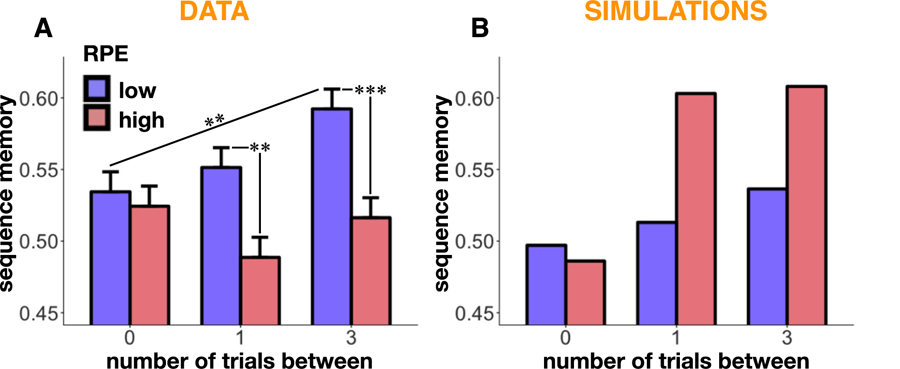Fig. 7.

Sequence-memory simulations along with behavioral results. A. Sequence memory as a function of RPE event and presentation distance (number of trials) within scene pairs in Exp. 4 and its replication (results averaged across both). Sequence memory was impaired for items spanning a high-RPE event (i.e., 1 and 3-trials-between), but there was no impairment in sequence memory for the high-RPE event and its direct predecessor (i.e., 0 trials-between). Also, sequence memory improved with increasing distance between items in the low-RPE condition but not the high-RPE condition. B. The simulation captured the effect that sequence memory improved with increasing distance between items in the low-RPE condition, but incorrectly predicted that sequence memory would improve with increasing distance between items in the high-RPE condition, and also incorrectly predicted better sequence memory for items spanning a high (compared to low) RPE event. Error bars represent SEM.
